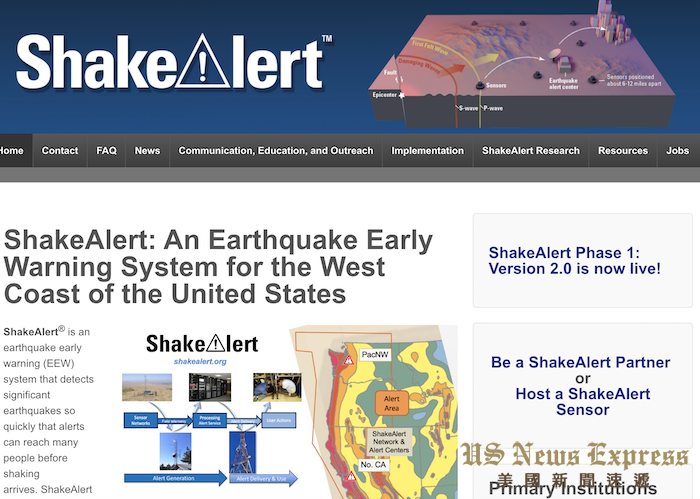LOS ANGELES — Mayor Eric Garcetti was joined by leaders from the United States Geological Survey (USGS) and CalTech today to announce critical updates to the ShakeAlertLA app that will lower the notification threshold across Los Angeles County. Starting this month, the nation’s first publicly available early warning system will alert residents to earthquakes of magnitude 4.5 or larger; the previous threshold was magnitude 5.0.
“Every day we are communicating the importance of preparedness, so that every Angeleno has the tools and resources they need to build a better life — and then protect that life when disaster strikes,” said Mayor Eric Garcetti. “Updates to ShakeAlertLA will result in an even more responsive application making our city stronger and our families safer.”
The USGS ShakeAlert Earthquake Early Warning System for the West Coast of the United States detects significant earthquakes so quickly that ShakeAlerts can reach people a few precious seconds before shaking starts.
ShakeAlertLA was developed in collaboration with USGS, AT&T, and The Annenberg Foundation to combine the USGS’ sensor network with mobile app technology. It launched on the Apple and Google Play stores on December 31, 2018, following more than a decade of research and development.
“The USGS, through its scientific expertise, creates ShakeAlert earthquake early warnings, but in order to be successful, our public and private partners must develop technologies to use and distribute the alerts,” said Doug Given, USGS earthquake early warning coordinator. “The City of Los Angeles is paving the way in earthquake public alerting with its ShakeAlertLA app.”
The City of Los Angeles and its partners have closely monitored the ShakeAlertLA app and continued working to improve its functionality and identify opportunities for further technological development.
ShakeAlertLA is a crucial step towards delivering ShakeAlerts to the entire West Coast — and it is the nation’s first test of delivering USGS-generated ShakeAlerts to a large population using a city-developed cell phone app.

Tools being developed by more than 50 ShakeAlert partners, including the City of Los Angeles, do not replace the need for residents and neighborhoods to take steps to plan and prepare for earthquakes. When you receive a ShakeAlert, you should act quickly to take protective action, such as Drop, Cover, and Hold On. Do not wait to feel the shaking. Examples of other protective actions are available online.
Mayor Garcetti has made resilience a key priority of his administration. In July, he launched a new campaign to strengthen citywide emergency readiness, calling on Neighborhood Councils to appoint preparedness officers, bring resilience directly into their communities, and take part in the Ready Your L.A. Neighborhood (RYLAN) program.
Earlier in his term, in 2014, the Mayor partnered with Dr. Lucy Jones and USGS to create the Resilience By Design report, which led to the enactment of a historic mandatory building retrofit ordinance to fortify vulnerable structures and save lives in the event of a major earthquake. To date, more than 2,500 soft-story retrofits have been completed, and just over 10,200 more are in progress, set to be finished within the next five years. In 2018, the Mayor built upon this work with Resilient Los Angeles, a report aimed at making L.A. the world’s safest and strongest city.
About ShakeAlert
Since 2006, the USGS has been developing its ShakeAlert Earthquake Early Warning (EEW) system with a coalition of collaborators for the entire West Coast of the U.S. In California, ShakeAlert collaborators include the California Governor’s Office of Emergency Services, Caltech, UC Berkeley, the California Geological Survey, and the University of Nevada, Reno.
ShakeAlert can provide users with critical seconds of warning that an earthquake has begun and shaking is imminent. Alerts are issued when an earthquake of magnitude 4.5 or larger is detected by a regional sensor network and shaking is expected to be felt in the Los Angeles area. Nevertheless, a limitation in any early warning system is distance from the epicenter. The further a user is from the epicenter of an earthquake, the greater the warning a ShakeAlert user may receive — inversely, a user who is located closer to the epicenter may receive less warning.
To learn more about ShakeAlert, click here.



















